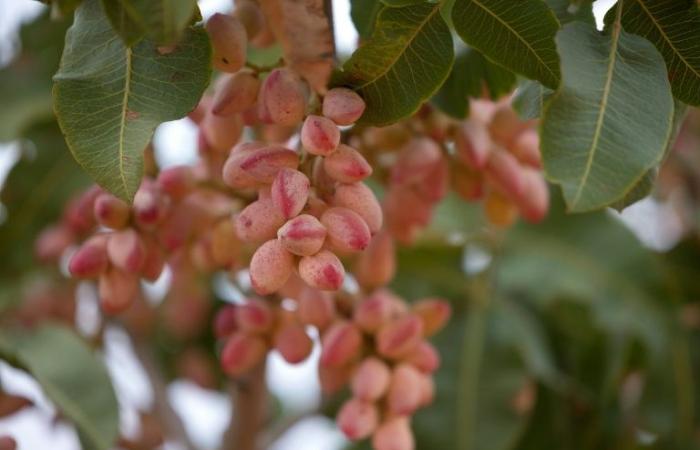Twenty years ago, Miguel Angel Garcia cultivated vines and cereals, like his father and grandfather before him. Today, this farmer from central Spain produces pistachio: “More profitable” in the face of increasing droughts, he assures.
At the head of a 26-hectare farm in the town of Manzanares, in the Castile-la-Mancha region, this 58-year-old arborist harvests between 10 and 20 tonnes of this nut each year, which is booming in the country. A sufficient level to sustain your business.
“I planted my first pistachio trees in 2007,” says the fifty-year-old, inspecting a row of trees covered with glowing clusters. “Wine and cereals were not viable (…) If I had not changed, I would not be able to make a living from my farm.”
In the stony plot behind him, a tractor shakes the trunk of a small tree, enclosed in a vast umbrella-shaped web. Two short pulses, and almost all of the fruit falls into the machine.
The pistachio tree is “a resistant tree,” explains Mr. Garcia. Above all, it is “adapted to the climate we have here”, marked by drought and arid temperatures in summer, and periods of cold during winter, he adds.
– “High demand” –
Like him, many have adopted this culture originating from Iran, mainly in Castile-la-Mancha, Andalusia and Extremadura. Regions facing a growing lack of water, in a country itself on the front line of climate change.
Each year, “between 5,000 and 10,000 additional hectares” are converted to pistachio, notes Mario González-Mohino, agronomist and director of the specialized site Pistacho Pro. This fruit comes from “desert regions” and is therefore “much better adapted” to the new climate, he adds.
According to the Ministry of Agriculture, the land devoted to it has increased fivefold in seven years, to 80,000 hectares. This makes Spain the leading pistachio country in Europe in terms of surface area, and the fourth in the world behind the United States, Iran and Turkey.
Production for its part “is still limited”, close to 9,000 tonnes per year, “but it will increase rapidly because the vast majority of plots have not yet come into production”, the trees being generally only exploitable at after seven years, says Mr. González-Mohino.
“There is strong demand, it’s a dynamic sector,” says Joaquín Cayuela Vergés, secretary general of the Pistamancha agricultural cooperative, as armfuls of freshly picked pistachios pass before his eyes.
In Pozuelo de Calatrava the harvests of the 51 members of the cooperative are sorted, peeled and dried. An essential process for Pistamancha, which markets 90% of its production in Europe, particularly in France and Germany, at a price varying from 10 to 11 euros per kilo.
– “Patience” –
In full growth, the cooperative launched the construction of a brand new factory for five million euros. It will make it possible to process “one million kilos of pistachios per year”, specifies Mr. Cayuela Vergés, who considers it essential to anticipate the boom in the sector.
Could this “boom” disrupt the market, leading to overproduction and lower prices? For those involved in the sector, the risk is unlikely, as the production of “made in Spain” pistachios is still far from meeting demand, in Spain as in Europe.
The pistachios here are “mostly imported”, mainly “from the United States”, recalls Mario González-Mohino, for whom the producers of the peninsula have a “beautiful future”. On condition, he specifies, to “remain lucid” about the reality of this culture.
“Many people think of becoming rich” with pistachio, but “when you plant pistachio trees, you should know that you don’t touch anything for several years”, the time that the trees “start to produce fruit”, abounds, in his field, Miguel Angel Garcia.
“I have been investing for 15 years” in this culture and “it is only now that I can recoup what I have spent and earn a salary”, he confides: “Pistachios are “It’s a matter of patience.”
Do you have a real estate project in mind? Yakeey & Médias24 help you make it happen!






